Key takeaways:
- Craft beer labels serve as storytelling tools, reflecting the brewery’s personality, brewing process, and flavor profiles.
- Effective labels stand out and resonate with consumers, providing essential information about the beer while expressing the brewery’s values.
- Current design trends include minimalism, vibrant hand-drawn illustrations, and the use of eco-friendly materials.
- Creating unique labels involves brainstorming, thoughtful color and font choices, and considering the tactile experience to enhance consumer connection.
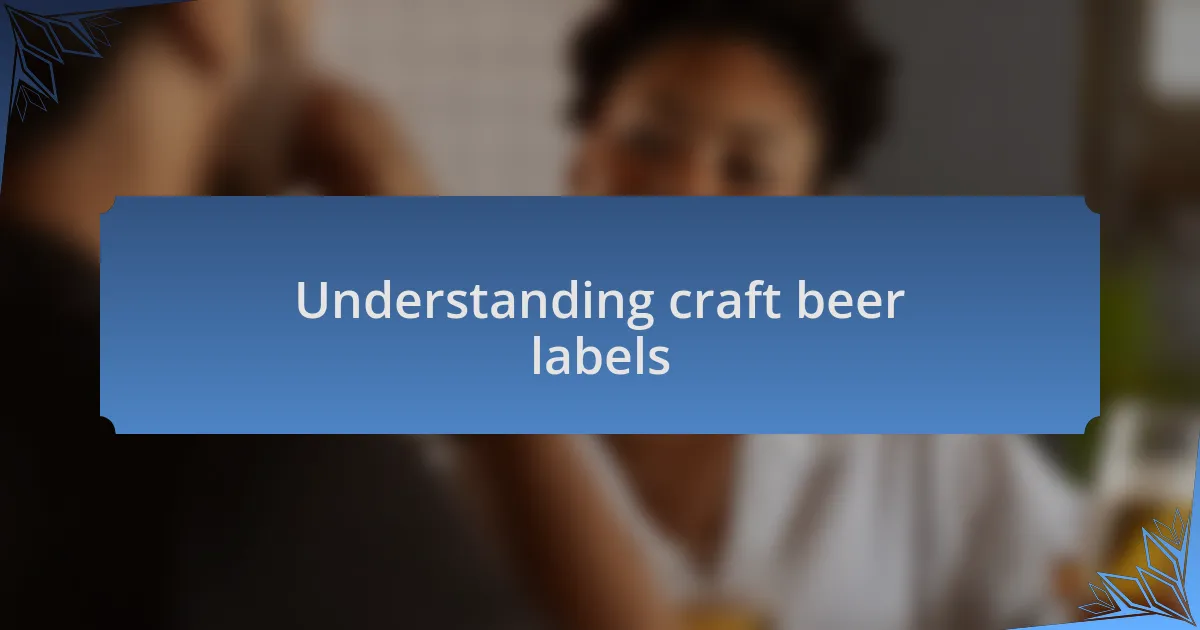
Understanding craft beer labels
Craft beer labels are more than just packaging; they’re a canvas for storytelling. I remember the first time I picked up a bottle with a label featuring an illustrated landscape and a quirky tagline. It wasn’t just about the beer inside; it was about the journey the brewery wanted to share. Have you ever found yourself drawn to a label, perhaps feeling an instant connection to the imagery or message? That’s the power of a well-crafted label.
When I began my journey into the craft beer world, I quickly realized that each label holds a glimpse into the brewery’s personality. Colors, fonts, and illustrations all play crucial roles in conveying the essence of the beer. I still can’t forget a label adorned with vibrant art that made me feel like I was adventuring in a local forest, perfectly setting the stage for a crisp, refreshing brew. How many labels have sparked a memory or a feeling for you?
One fascinating aspect of craft beer labels is how they reflect the brewing process or the flavor profile of the beer. I’ve seen labels that cleverly incorporate ingredients visualizations, like hops or malts, creating a visual connection to the flavors to expect. It prompts an engaging question: how many times have you scanned a label, intrigued to learn more about the ingredients that go into your favorite brew? Understanding these elements can enrich your tasting experience and deepen your appreciation for the artistry behind each bottle.
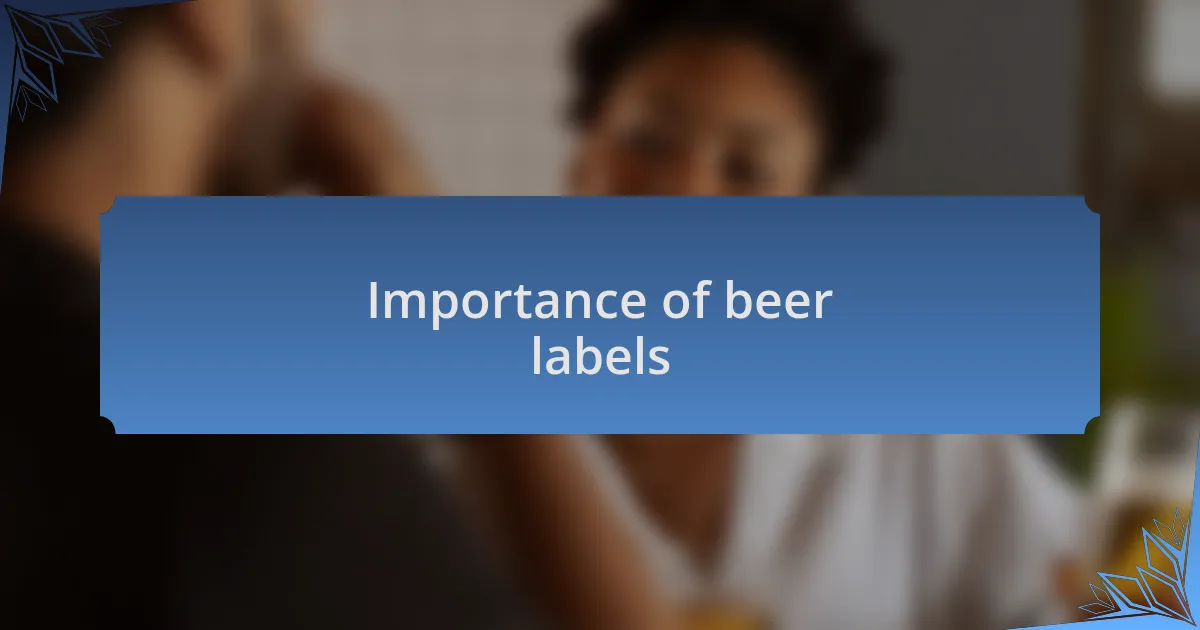
Importance of beer labels
Beer labels play a crucial role in distinguishing one craft brew from another. I recall standing in a crowded store, overwhelmed with choices, when a label featuring a clever pun caught my eye. It made me laugh and instantly piqued my curiosity. That moment reminded me how important it is for a label to not only stand out but also resonate with the drinker’s sense of humor or interests.
They can also convey essential information about the beer itself, such as style, ABV (alcohol by volume), and tasting notes. I’ve seen labels that make these details feel approachable rather than intimidating. For instance, a beautifully designed label might describe the beer’s flavors using relatable language, sparking excitement. Have you ever chosen a beer simply based on a label’s description? It’s the gateway to discovering new favorites.
Moreover, an effective beer label reflects the brewery’s ethos and values. When I stumbled upon a label that emphasized sustainable brewing practices, I felt a strong connection to the beer and its creators. This connection enhances my appreciation for the drink, knowing I’m supporting a brand that aligns with my values. Isn’t it fascinating how much a simple label can reveal about a brewing philosophy?
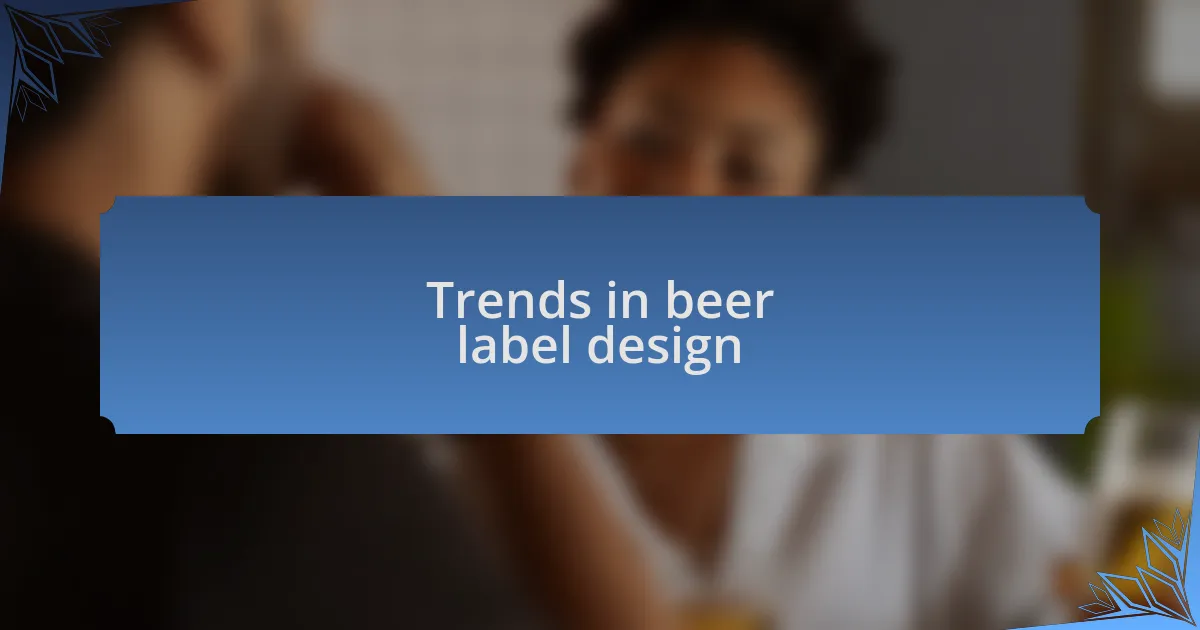
Trends in beer label design
The world of beer label design is currently experiencing a striking shift towards minimalism. I’ve noticed labels that embrace clean lines and muted colors, opting for simplicity over elaborate graphics. This trend not only allows the beer’s name and essential information to shine but also creates a modern aesthetic that appeals to a younger crowd. Have you ever found yourself drawn to a label that feels fresh and uncluttered? It’s almost like a breath of fresh air in a sea of busy designs.
Another trend gaining traction is the use of vibrant, hand-drawn illustrations. Personally, I find these labels incredibly charming. They often tell a story about the beer or the brewery itself, capturing the essence of what’s inside the bottle. I once picked up a beer with a whimsical illustration of a mythical creature, and I remember being instantly transported to a storytelling realm, sparking my imagination before I even took my first sip. Doesn’t it feel special when a label seems to invite you into a larger narrative?
Furthermore, eco-friendly materials and sustainable practices are increasingly being integrated into beer label design. I recall discovering a brewery that proudly mentioned its use of recyclable materials on their label, and it resonated with my values. It made me feel good knowing my choice supported responsible practices. Isn’t it exciting to see how labels can not only promote the drink but also advocate for environmental consciousness?
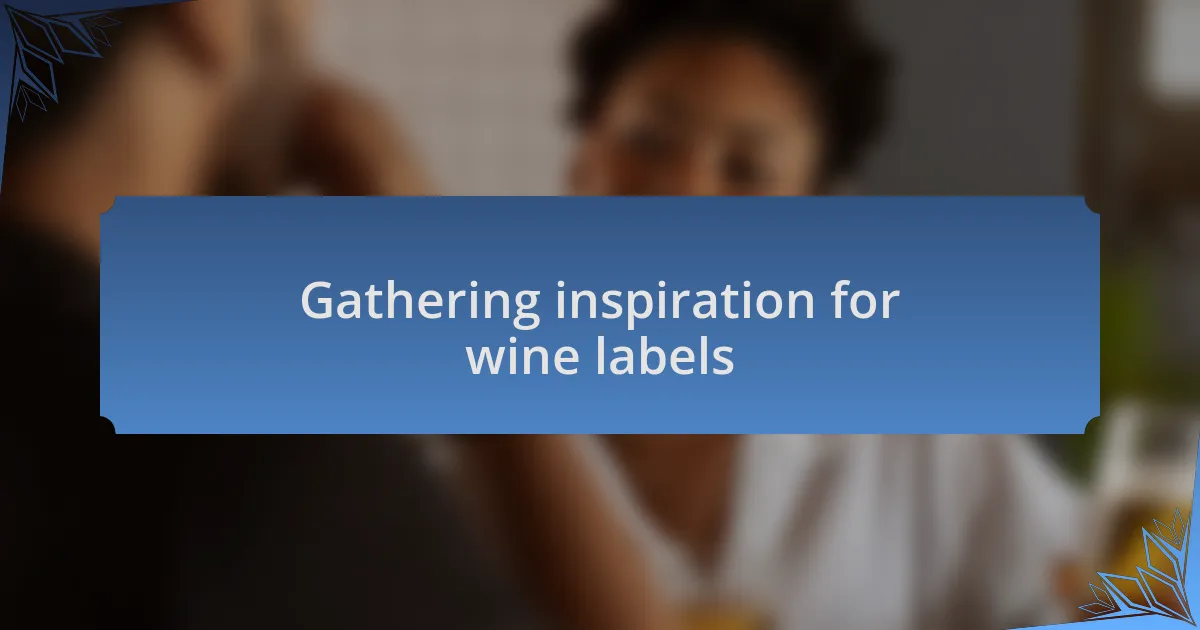
Gathering inspiration for wine labels
When thinking about gathering inspiration for wine labels, I often turn to the rich history of winemaking itself. I once visited a vineyard that had labels depicting its family heritage, and it struck me how much tradition could be conveyed through design. The elegant simplicity of a label that tells a story can create an instant connection, making the bottle feel like a piece of art. Have you ever felt that sense of connection when you picked up a bottle with a beautifully designed label?
Exploring local art scenes can also be a goldmine for label inspiration. I remember a local gallery showcasing artwork inspired by nature, and it hit me—who wouldn’t want to sip a glass of wine that reflects the beauty of the landscape it came from? Using local artists can add a unique flair while supporting the community, which ultimately enriches the label’s narrative. Doesn’t it make you appreciate a wine even more when you know the story behind its label?
Incorporating sensory elements into wine label design can elevate the entire drinking experience. I’ve seen labels that evoke aromas or flavors, like a lavender motif on a bottle of rosé, which immediately made me think of summertime picnics. It’s fascinating how a well-thought-out design can engage more than just the eye; it invites the other senses into the experience too. How powerful is it to have a label that hints at the wine’s character even before you take your first sip?
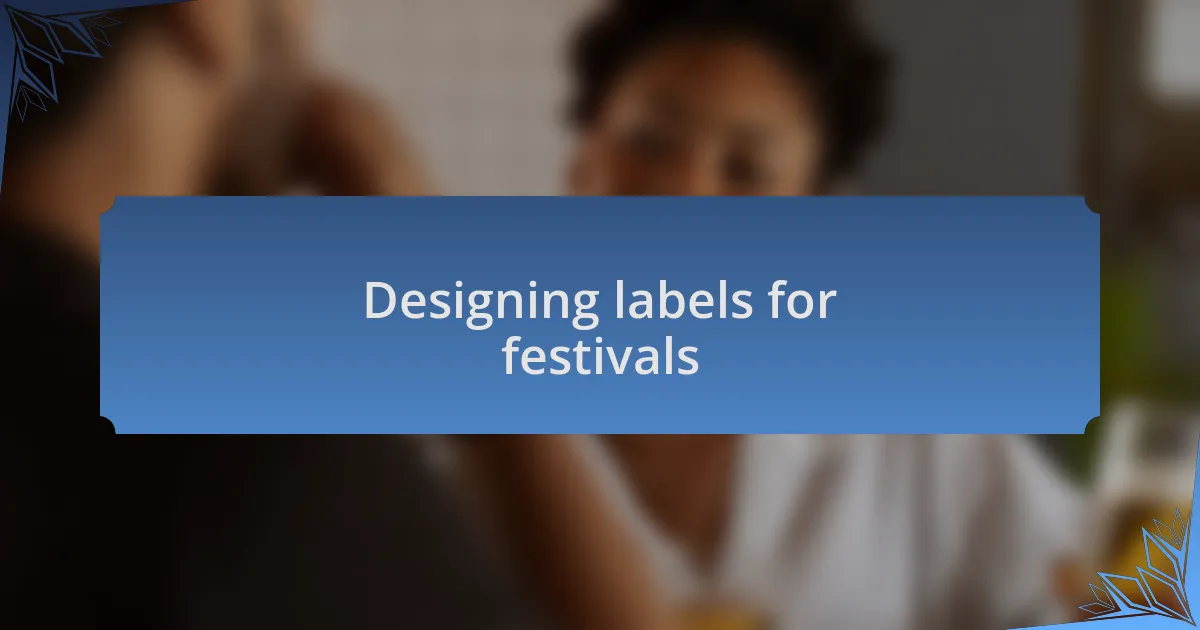
Designing labels for festivals
Designing labels for festivals requires a careful balance between creativity and functionality. I remember the thrill of creating a label for a local craft beer festival, focusing on vibrant colors and playful typography. It dawned on me how a captivating label could not only attract attention but also set the tone for the entire festival experience. Have you ever been drawn to a booth simply because the label looked like a celebration?
I’ve learned that incorporating festival themes into your label design can make a significant impact. For instance, using elements like beer glasses, hops, or even local landmarks can resonate with festival-goers. When I created a label inspired by the festival’s unique location, it felt rewarding to see people gravitate towards it, as if they were embracing a piece of their community. Doesn’t it feel special when a label captures the essence of the moment?
Moreover, the tactile feel of the label can enhance the visual appeal. Using textured paper or unique finishes can create a delightful experience for the consumer. I distinctly recall experimenting with a matte finish for one festival label, which added a sophisticated touch that complemented the craft beer inside. Isn’t it fascinating how even the simplest design choices can elevate a product and connect more deeply with the audience?
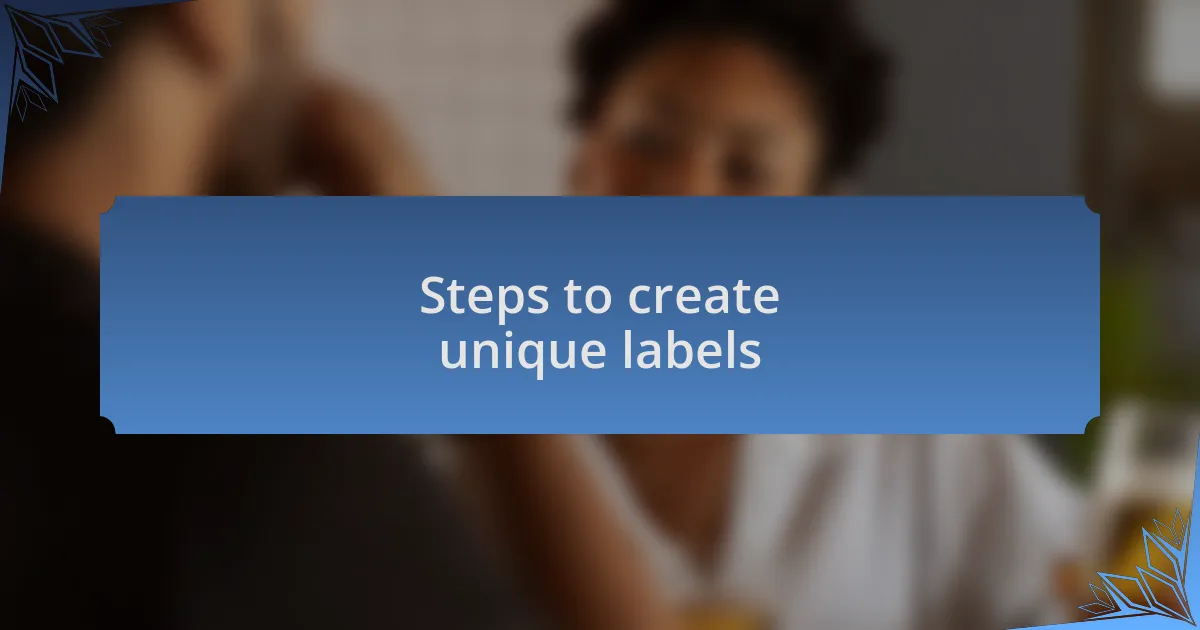
Steps to create unique labels
When creating unique labels, the first step for me is to brainstorm ideas that reflect the personality of both the beer and the festival. I often try to visualize the beer’s story, which helps me identify key themes that I can incorporate into the design. Have you ever found inspiration in a moment or feeling? I certainly have, and it’s often where the best ideas come from.
Next, I focus on color schemes and fonts that not only catch the eye but also convey the beer’s character. For one label, I opted for earthy tones and a rugged font to match a robust stout I was featuring, which instantly connected with consumers who appreciated a down-to-earth vibe. It made me realize how critical these visual elements are in making a lasting impression. How do you want people to feel when they first see your label?
Lastly, I consider how the label will be printed and applied. I remember working on a batch where we tried out a die-cut shape that resembled a hop cone. The end result wasn’t just a label; it was a conversation starter. Isn’t it incredible how thoughtful design choices can make your product stand out on crowded shelves? Crafting a label can be an adventure, and each detail holds the potential to intrigue and invite further exploration.

Showcasing labels at craft festivals
When I showcase my beer labels at craft festivals, I consider the ambiance and audience’s energy. Each festival has its own vibe, and I remember one year, my labels were a hit at a local outdoor event because they captured the essence of summer with bright colors and playful design. Can you think of a brand that immediately evokes a season or feeling for you?
Engaging with festival-goers is as crucial as the labels themselves. I often find that seeing the expressions on people’s faces as they read the stories behind each design adds another layer to the experience. Last year, I had a group gather around, laughing and sharing their interpretations of my label’s narrative—moments like that highlight the connection between craft beer and community. It made me wonder: how can storytelling elevate your brand’s presence at a festival?
For me, setting up my display is an art in itself. I’ve learned to arrange everything in an inviting way, drawing attention without overwhelming the senses. I often play with lighting and backdrops that complement my labels, creating a mini-exhibition of sorts. Have you tried curating your space to reflect your brand’s spirit? On one occasion, my setup led to spontaneous discussions about the artistic process, making it clear how labels can be a bridge between brewer and consumer.